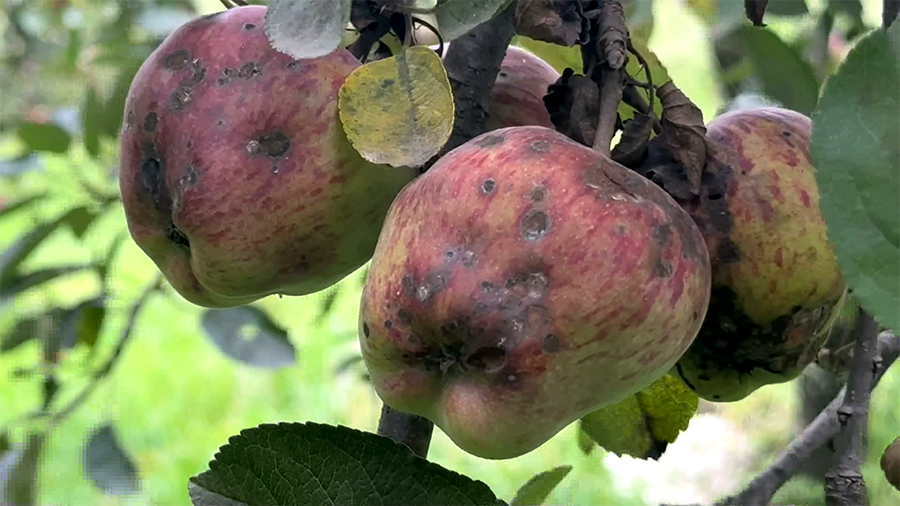
Apple cultivation used to be a thriving farming activity in Haa. However, records maintained with the National Statistics Bureau show that apple production in Haa fell by more than seven times the fruit’s total yield a decade ago. Farmers say pests and diseases, and drying up of trees are some of the reasons that could have affected the production. Some even think climate change could be the possible cause.
 Apple harvesting season in Haa is just around the corner. However, farmers say they are not expecting a good harvest this year as well. 51-year-old Sonam from Kartshog Gewog’s Ingo village shows how his apple trees are dying.
Apple harvesting season in Haa is just around the corner. However, farmers say they are not expecting a good harvest this year as well. 51-year-old Sonam from Kartshog Gewog’s Ingo village shows how his apple trees are dying.
He is now left with only around 50 apple trees in his orchard. For over a decade he earned well from selling apples but not anymore. His apple yields dropped since a few years ago due to infestation by unidentified diseases.
“For the past seven to eight years, apple yield was good and we were able to make good income. Of late the trees have started dying. It starts from branches and then the whole tree dries up. In Haa, apple trees are slowly disappearing.”
“I had to chop off all my apple trees in one of the orchards. In the last few years it has all died, there were over a hundred apple trees. Now I have planted grass to feed my cattle,” said Tshering, another farmer.
“Now the quality of apples in my orchard is worsening. Therefore, they do not qualify for markets that buy apples to make juice. That could be one of the reasons people are not taking an interest in cultivating apples. We just grow them for self-consumption now,” said Namgay Tshering, a resident.
People sought expertise from relevant offices but to no avail.
“Earlier there was one lady agriculture officer who visited my farm and said that there was nothing they could do. She advised us to plant apple trees in fresh lands. But that is also not working because most of my neighbours who grew apples in fresh lands also started dying. I don’t know if it is because of the rising temperature or unprecedented weather patterns,” added Sonam, a farmer.
“We went to the agriculture office and asked their assistance but officials said there is no treatment for the dying trees. They also said it must be because of climate change that is causing the downfall of apple cultivation in the district,” said Tshering, another farmer.
“We cannot confidently blame climate change but it is quite evident that there are some impacts. Now that we are not able to make good income from the sale of apples, people are not putting a lot of effort into raising them. This could also be adding to the decline,” said Namgay Tshering.
The district agriculture office said that they were aware of the situation and tried all their expertise but were not successful. The office said they supplied pesticides and other chemicals to improve the health and productivity of the apple trees.
The office is now encouraging the farmers to cultivate high-end pears and peaches among other fruits as a substitute. Besides suspecting climate change as a probable cause, officials also have not been able to determine what could be causing the downfall of apple cultivation in Haa.
Data maintained with the National Statistics Bureau shows that Haa produced 555 metric tonnes of apples in 2013, which dropped significantly to around 76 metric tonnes last year.
Namgay Wangchuk, Haa
Edited by Kipchu





